Sandy Fung is wearing slip-on sneakers as she wades into the leaves that have taken over the narrow path along the west side of her house. She briefly greets some tall ginseng, brushing her fingers against their maroon stems, which have begun to grow green berries — then dives into the foliage. It isn’t long before she finds what she’s looking for. Green, round and speckled, they look like dinosaur eggs.
“Here are the figleaf gourds!” she says excitedly.
Every inch of Fung’s yard is covered in veggies. In the front, a vast canopy of hanging chayote squash and bitter melons. In the back, green beans, purple beans and droopy fuzzy gourds. On the side, so many tomatoes that they’ve spilled onto the neighbour’s property.
There’s a fig tree almost as tall as the house, and Fung can stroll out onto her balcony to pick from it. A skinny greengage plum tree has shown up, too. She has no idea where it came from, but it’s a welcome, crunchy addition. All of this bounty means she hasn’t bought produce since April.
Fung’s house is as standard as they come: a Vancouver Special on a 33-by-113-foot lot. Like other immigrants who bought these modest properties on the east and southeast of the city before their worth soared to over $1 million, Fung has made intense use of the limited yard space to grow fruits and vegetables.
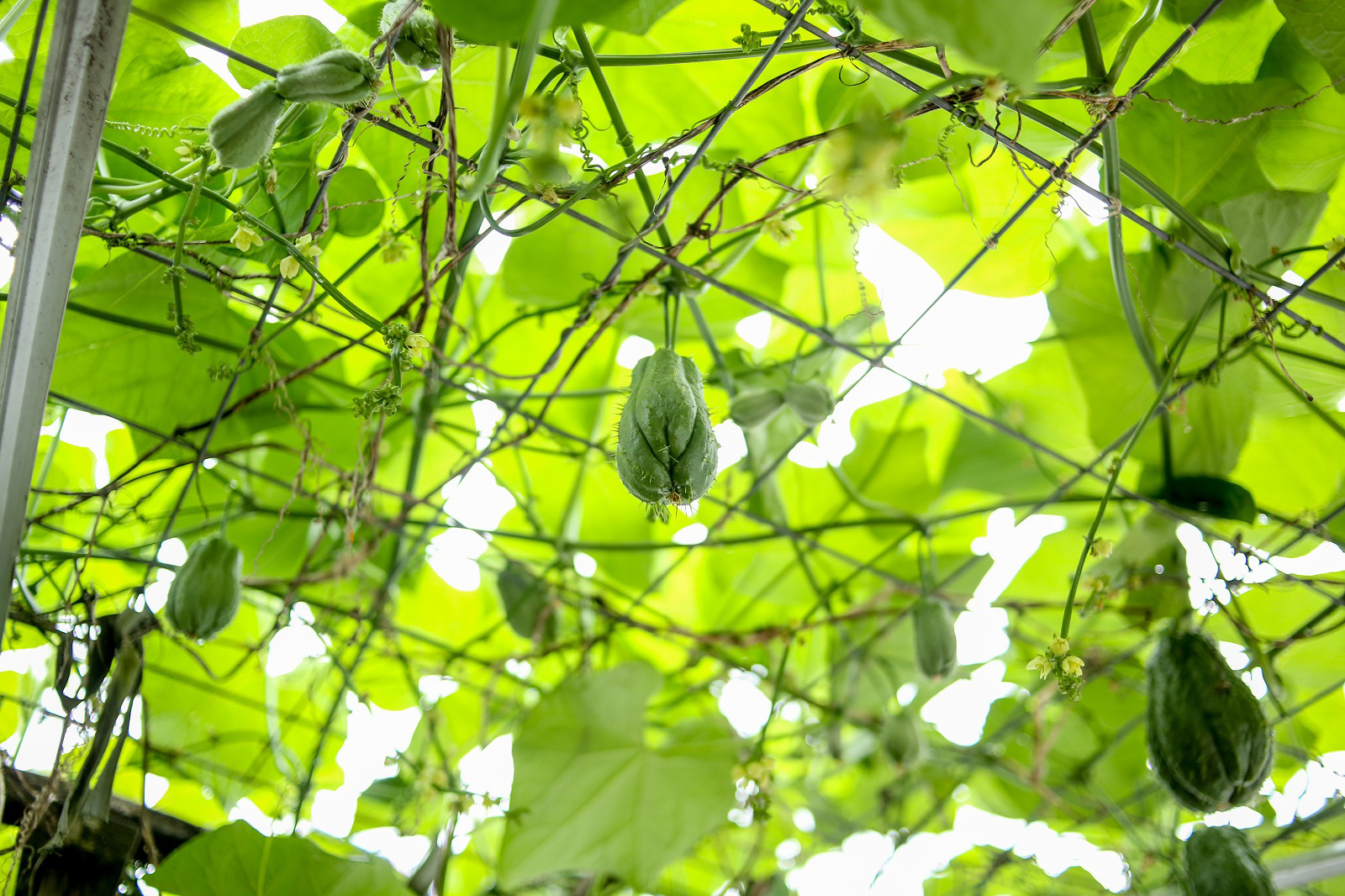
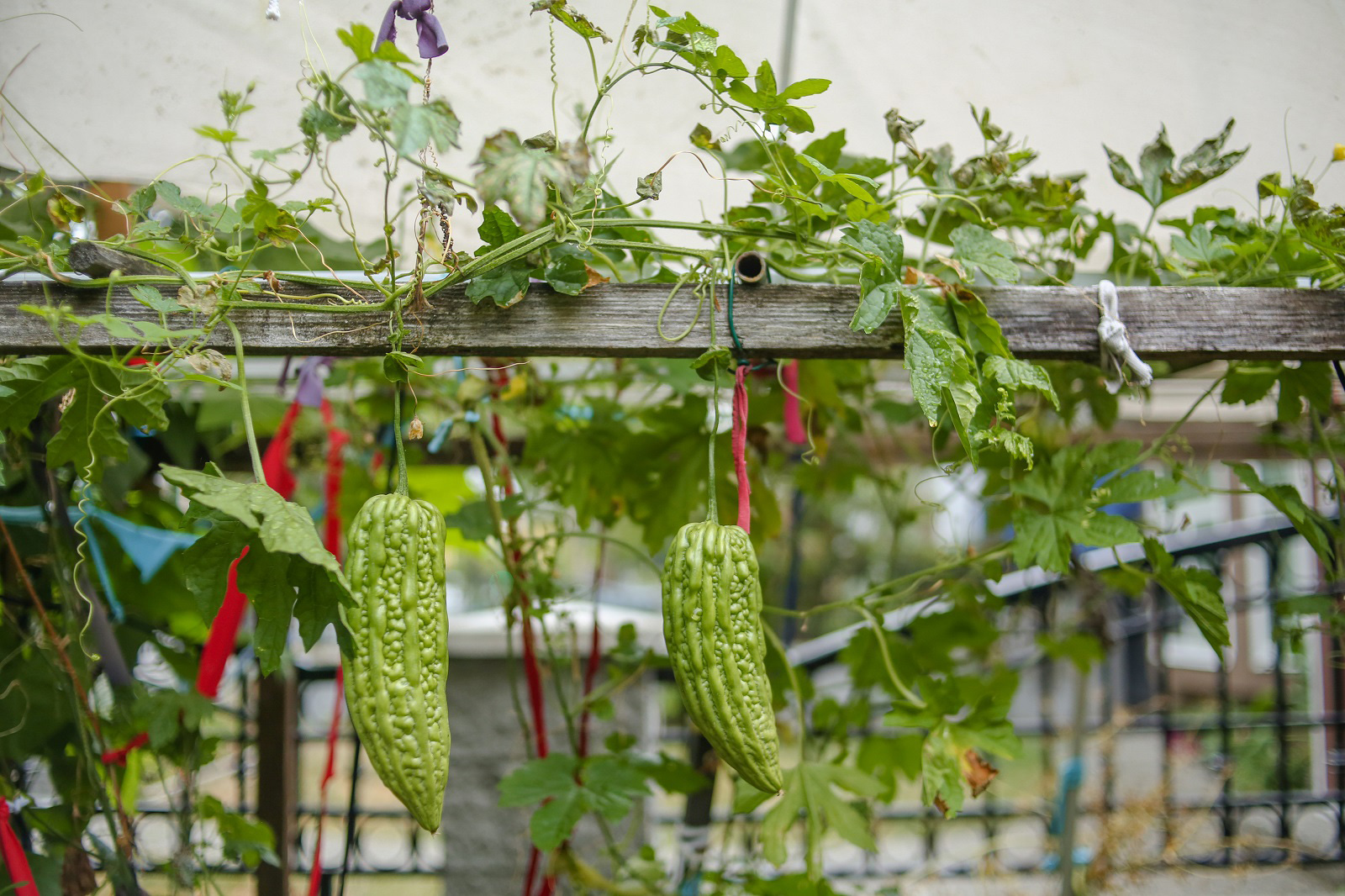
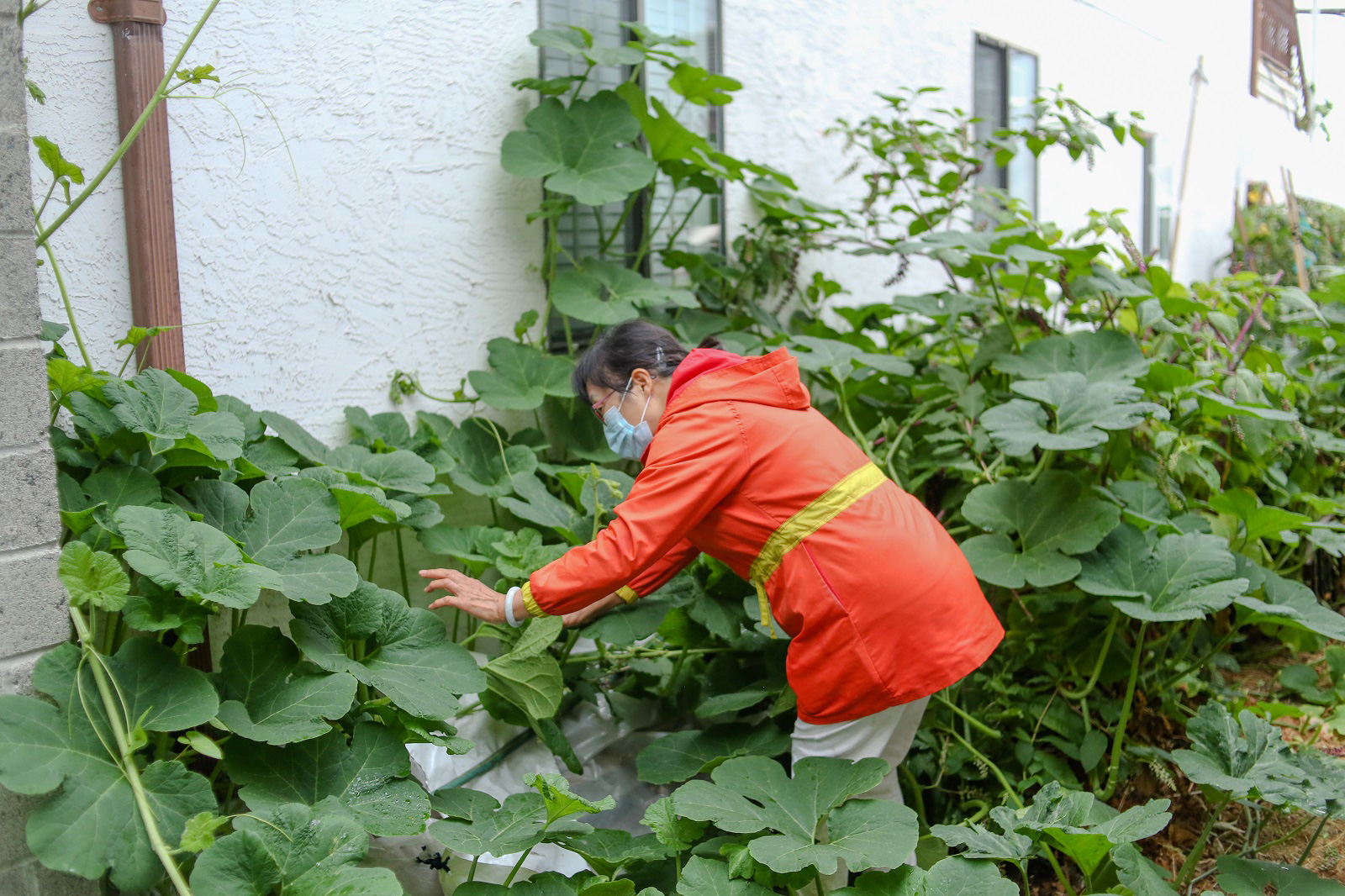
Stroll any block in these parts of Vancouver and you’ll see houses like Fung’s, with leafy greens and plump gourds galore.
Growing food is common among certain cohorts of immigrants, mostly those with Cantonese backgrounds, but also those with Italian, Portuguese, Punjabi, Vietnamese and other Chinese roots. B.C.’s temperate climate is good for growing many East Asian vegetables, particularly brassica crops like bok choi, gai lan and napa cabbage.
But exactly how prevalent is yard gardening? When did it start? And do such gardens number in the hundreds or thousands?
There is a lack of research that answers these questions.
On the surface this might seem strange, considering yard gardens are a point of local heritage in Vancouver, whose government is obsessed with becoming the "greenest city in the world." Dig deeper, though, and it’s not that surprising: yard-based vegetable gardening here is primarily an immigrant activity, often conducted in other languages than English and without connection to formal clubs.
A brief city survey conducted in 2007 did confirm some key facts: growing food is more common on east side properties than the west, and more “Asian” residents do it than everyone else.
The new Backyard Garden Project aims to help fill the gap in info. It’s a showcase of the people behind the produce, and the layers of meaning behind the busy backyards.
Undergraduates from UBC’s Initiative for Student Teaching and Research in Chinese Canadian Studies partnered with the Museum of Vancouver on the two-fold project (which isn’t limited to gardeners of Chinese backgrounds).
There’s a garden set up at the museum itself, with vegetables representative of the multicultural city. And there are stories collected from Metro Vancouver’s garden growers, immigrants and children of immigrants, which are being shared online. Fung, whose home researchers spotted one day on a walk, is one of the participants.
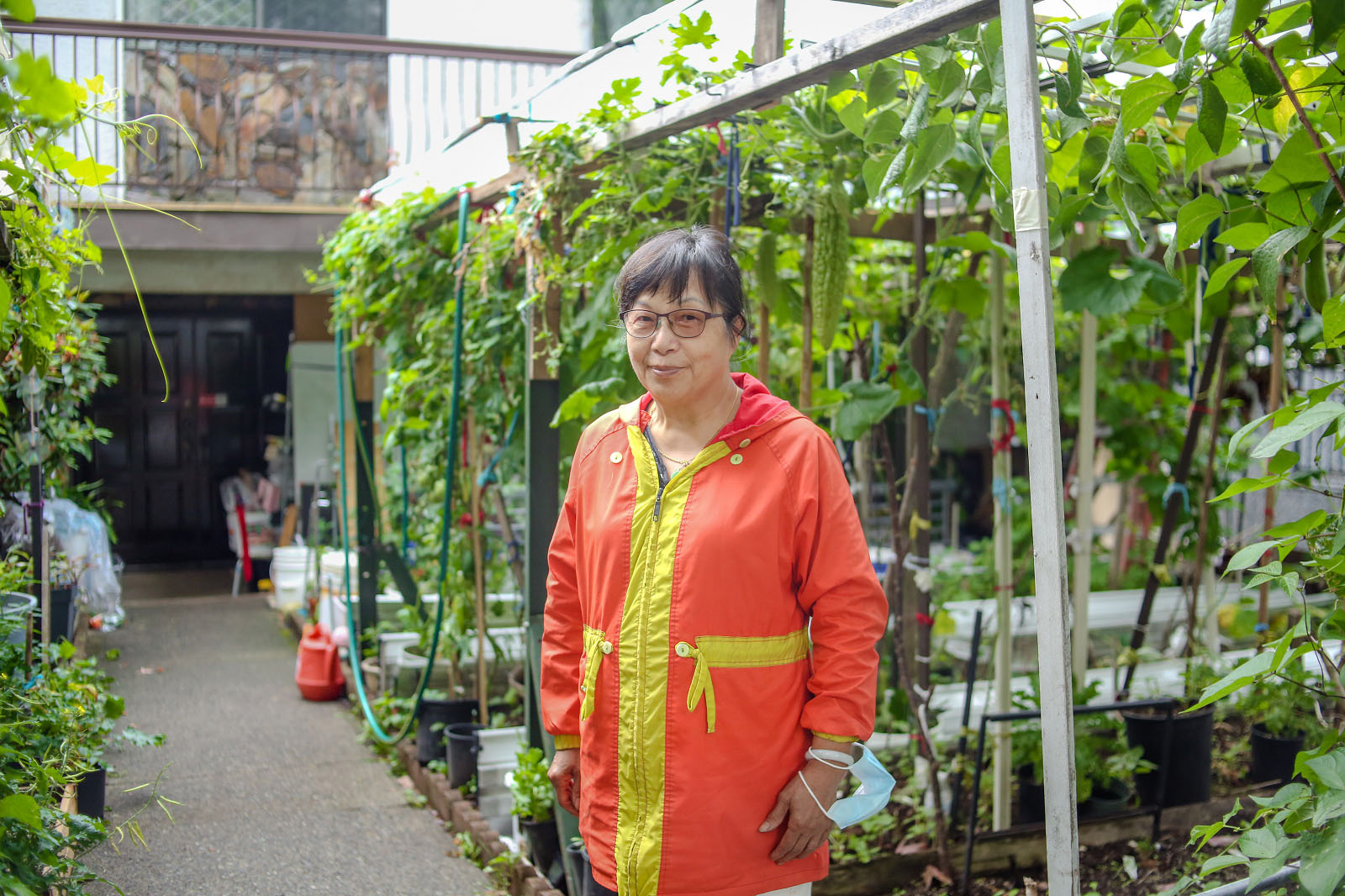
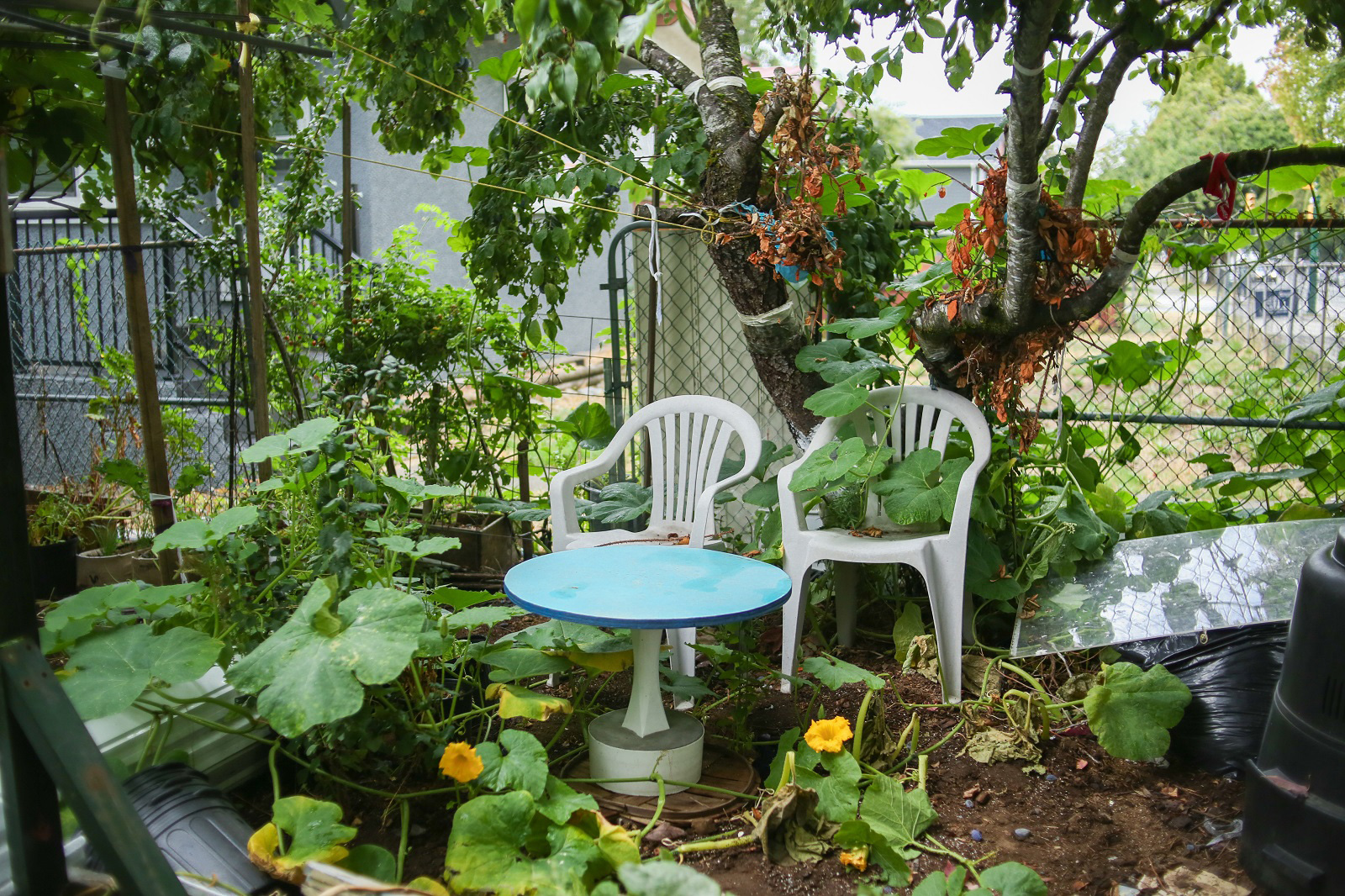
What’s the connection between diasporas and this domestic agriculture? “Culinary citizenship,” says Wei Yan Yeong, one of the research assistants.
Yes, it’s nice to eat food from homelands that is harder to come by at grocers and supermarkets: Cantonese bitter lettuce, Italian tromboncino squash and a favourite of one of Yeong’s interviewees, Peruvian purple peppers.
But as migrants plant living reminders of where they came from, the act of growing not only points back to one’s cultural heritage but also towards a healthy future. Seeing the fruits of their labour gives people a tangible sense of citizenship as they literally put down roots in their new home, explains Yeong.
More practically, it’s a way to eat healthily and save money. For low-income immigrant seniors, it’s even a way to make money, selling plants and veggies they grow on the streets of Kingsway and Victoria Drive.
These gardeners and peddlers are part of a long history of migrants in B.C. agriculture, which is older than the province itself.
In the 1860s, Chinese who stuck around after the gold rush were looking for work but met discrimination from trade unions who didn’t want them in their industries. There was, however, little resistance to Chinese doing a type of work undesirable to many white settlers: farming.
By the 1920s, Chinese dominated the sector in many parts of B.C. It wasn’t Chinese staples, but European produce that they grew: potatoes, carrots, onions, corn, cabbage, asparagus and tomatoes, supplying the province’s households, hotels and boarding houses. In South Vancouver, Chinese farmed the flatlands by the Fraser River, including land of the Musqueam band.
Despite this 160-year history, race and racism in agriculture has persisted. In the 1970s, for example, white wholesalers exploited Chinese farmers by overcharging.
In Metro Vancouver, the face of the green city continues to be very white, with the contribution of farmers of colour made invisible, according to a 2012 paper by Canadian food scholars Natalie Gibb and Hannah Wittman. A count by Statistics Canada in 2006 found that 40 per cent of farmers and farm managers in the region are a “visible minority,” the largest diaspora being South Asians.
It’s no surprise then that urban gardens and farmers markets are often what’s spotlighted while growers like Fung are neglected. These growers may be working on a smaller scale, but they’re making prolific use of the urban land in their possession, all the while nourishing generations of people and plants.
Fung grew up in a farming family in China, Xinhui county in the Cantonese south, but she didn’t like the laborious work. She turned her attention to becoming a seamstress instead, later working in Macau before immigrating to Vancouver in the 1980s.
When she and her husband bought their South Vancouver house in the early 1990s, their front yard had a lawn like any other. About six years ago, her son said that he was interested in eating organic produce.
For years, Fung had resisted growing anything at home because it reminded her of her family’s toil. But after watching her son poke around the soil unsuccessfully, she decided to take over. “He wasn’t able to grow anything!” she says in Cantonese.
Seeds and plants came from friends. Soil beds were built out of her husband’s leftover roofing panels. And because she ran an alteration shop, she had all the cloth she needed to tie supports for heavy melons that needed help staying attached to trellised vines.
Many yard gardeners like Fung grew up in places and generations when everyday objects were reused, never thrown away. Five-gallon buckets that once held soy sauce are used as planters or anchors for trellis systems. Large polypropylene bags that once held rice are fashioned into jackets for large melons. DVDs and egg tart shells are hung to ward off crows.
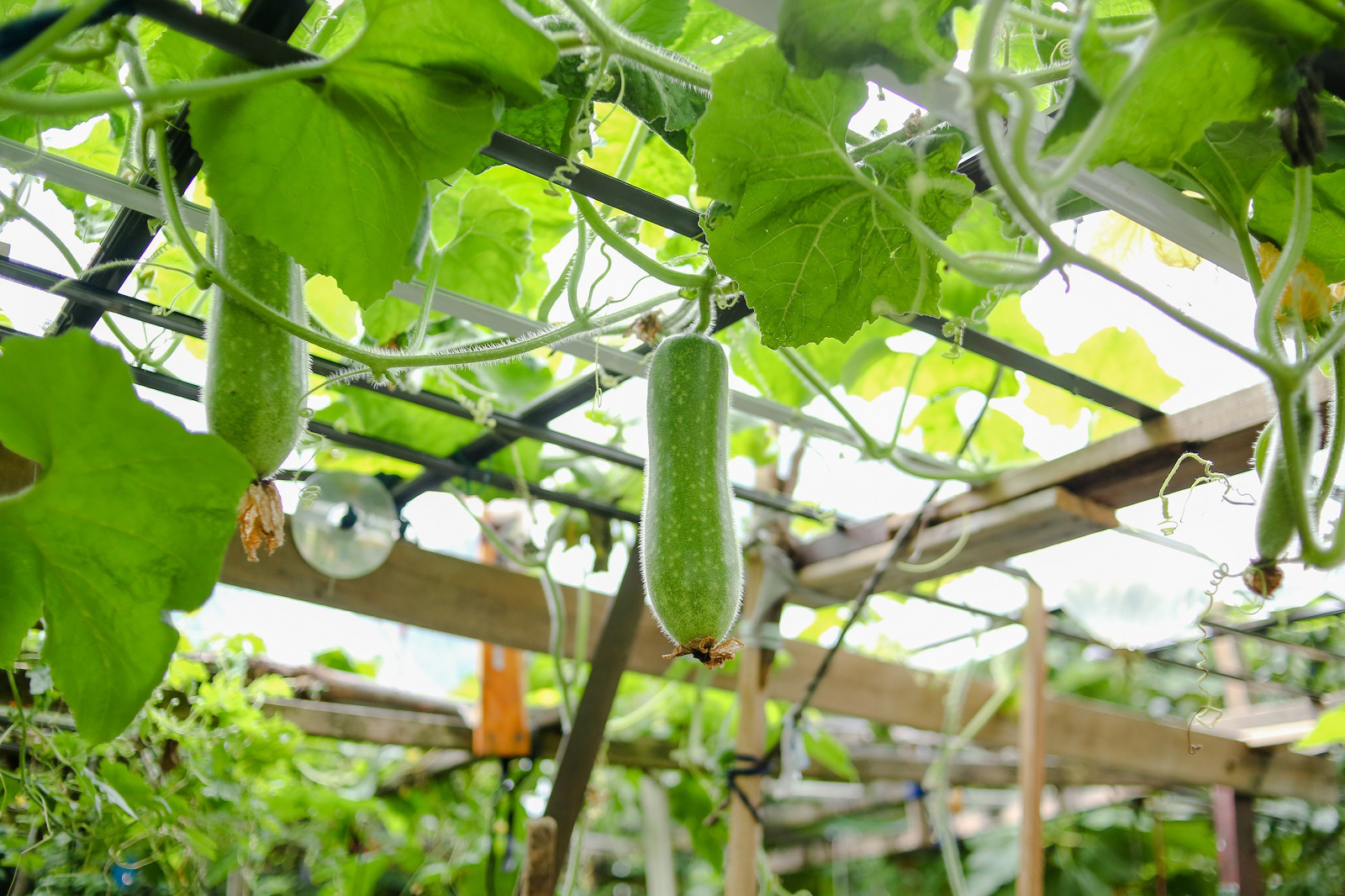
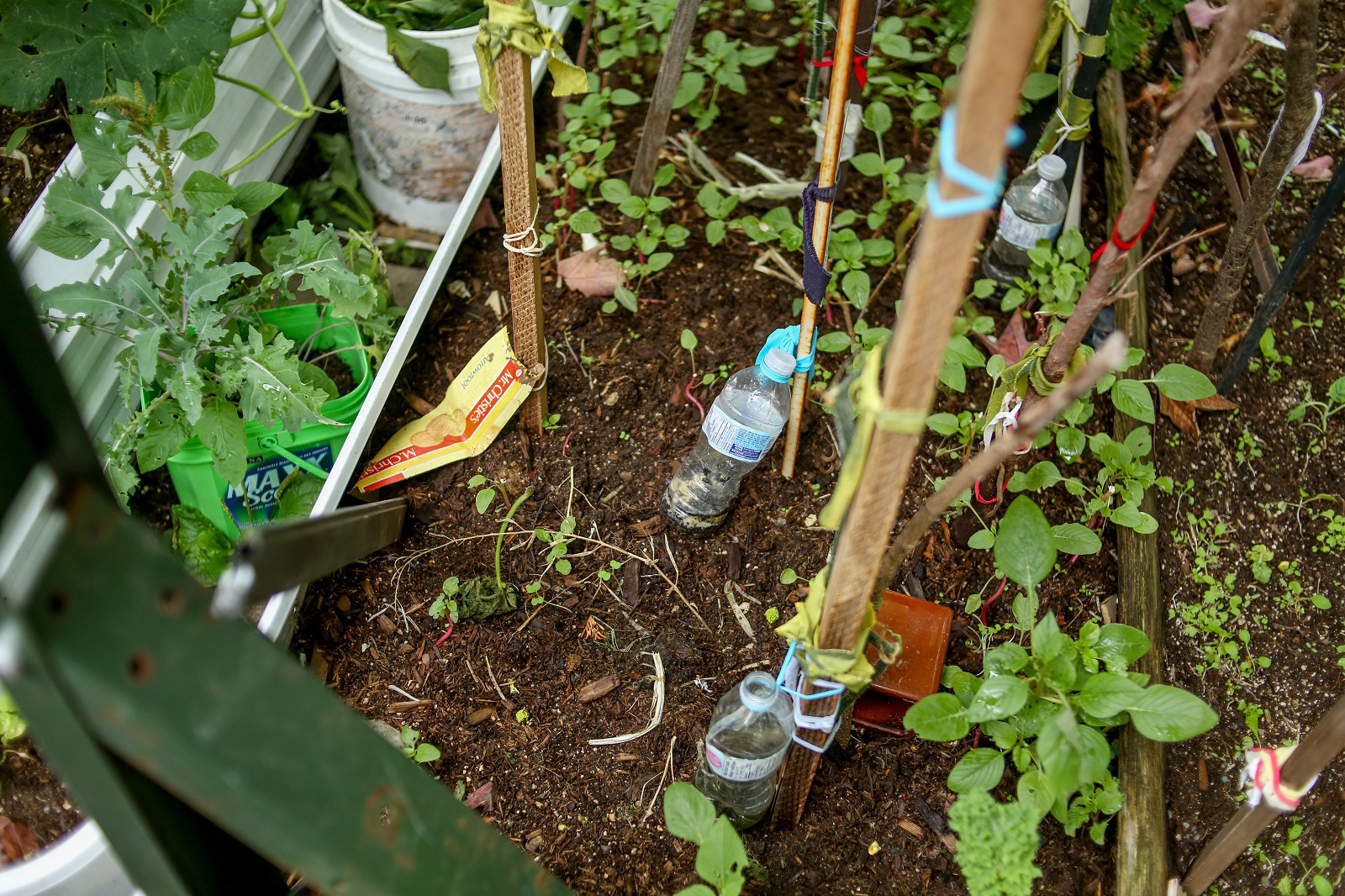
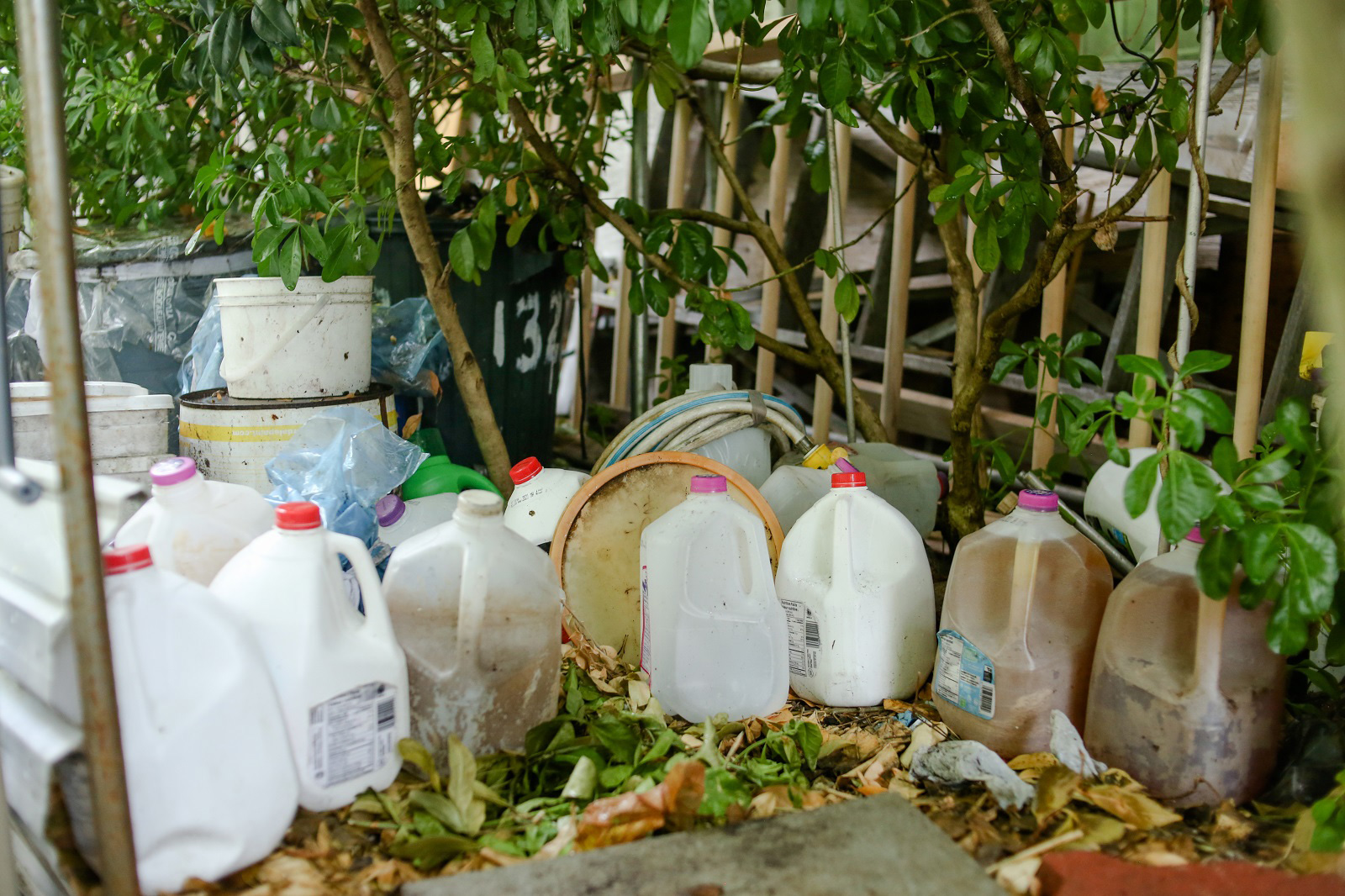
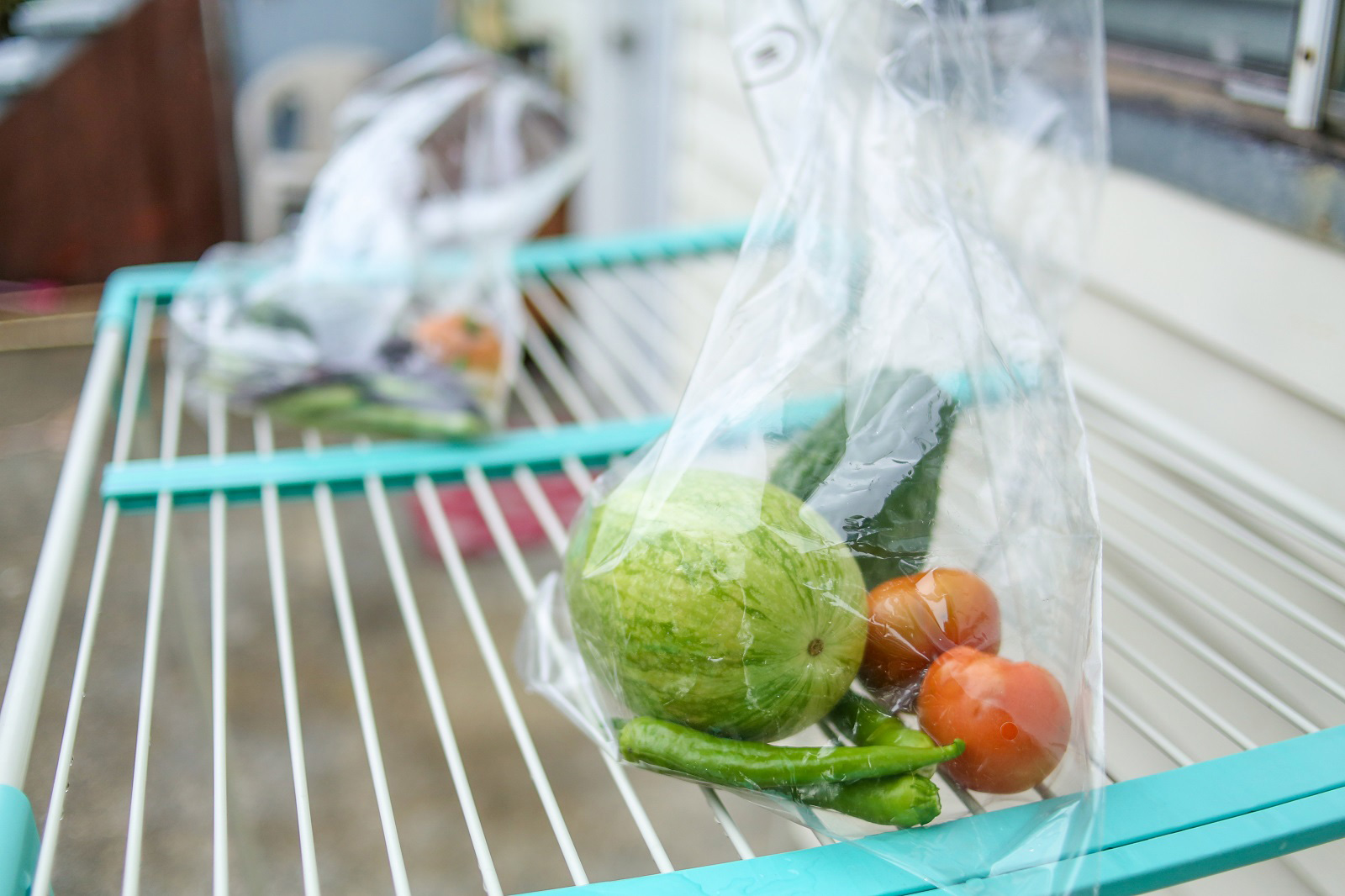
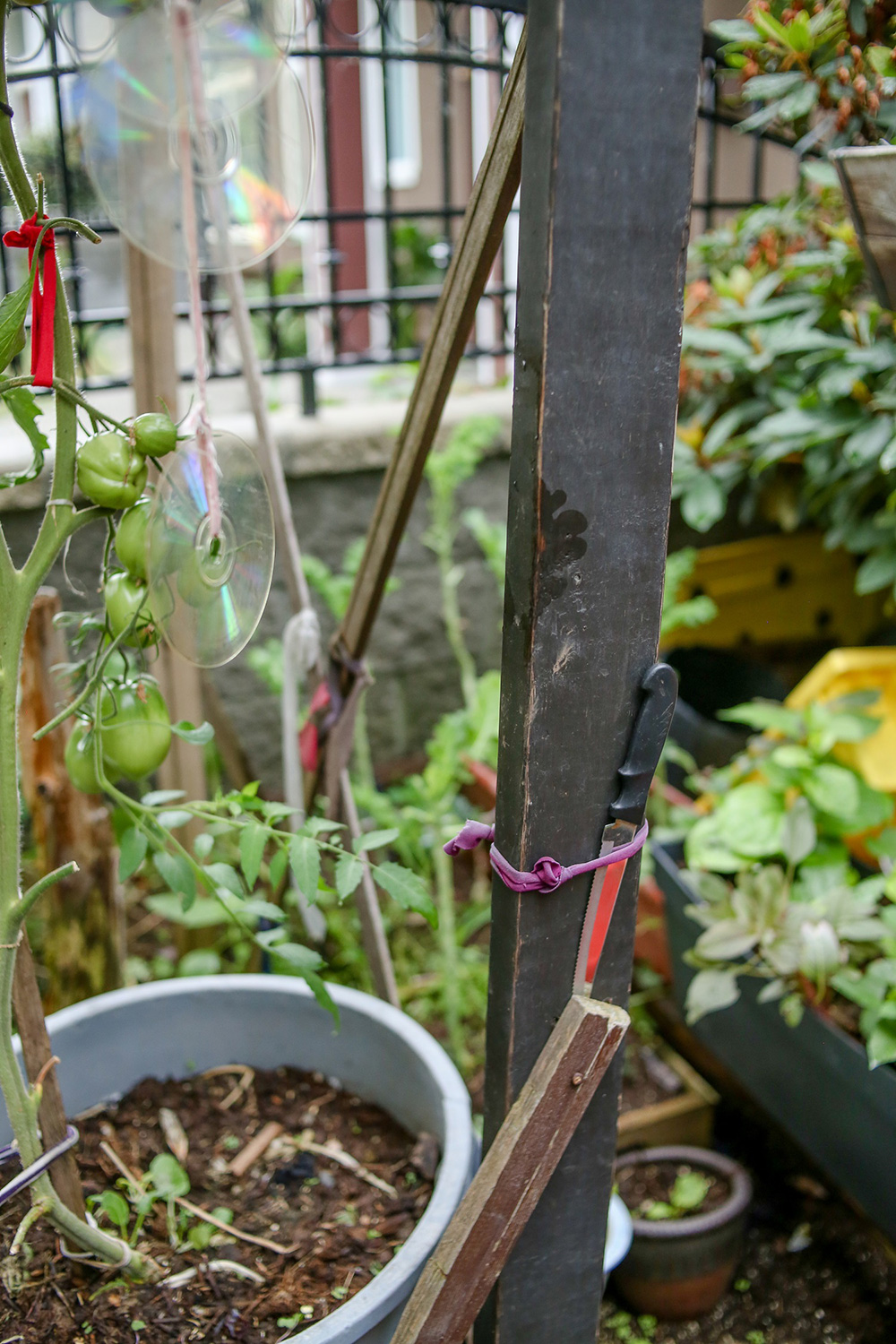
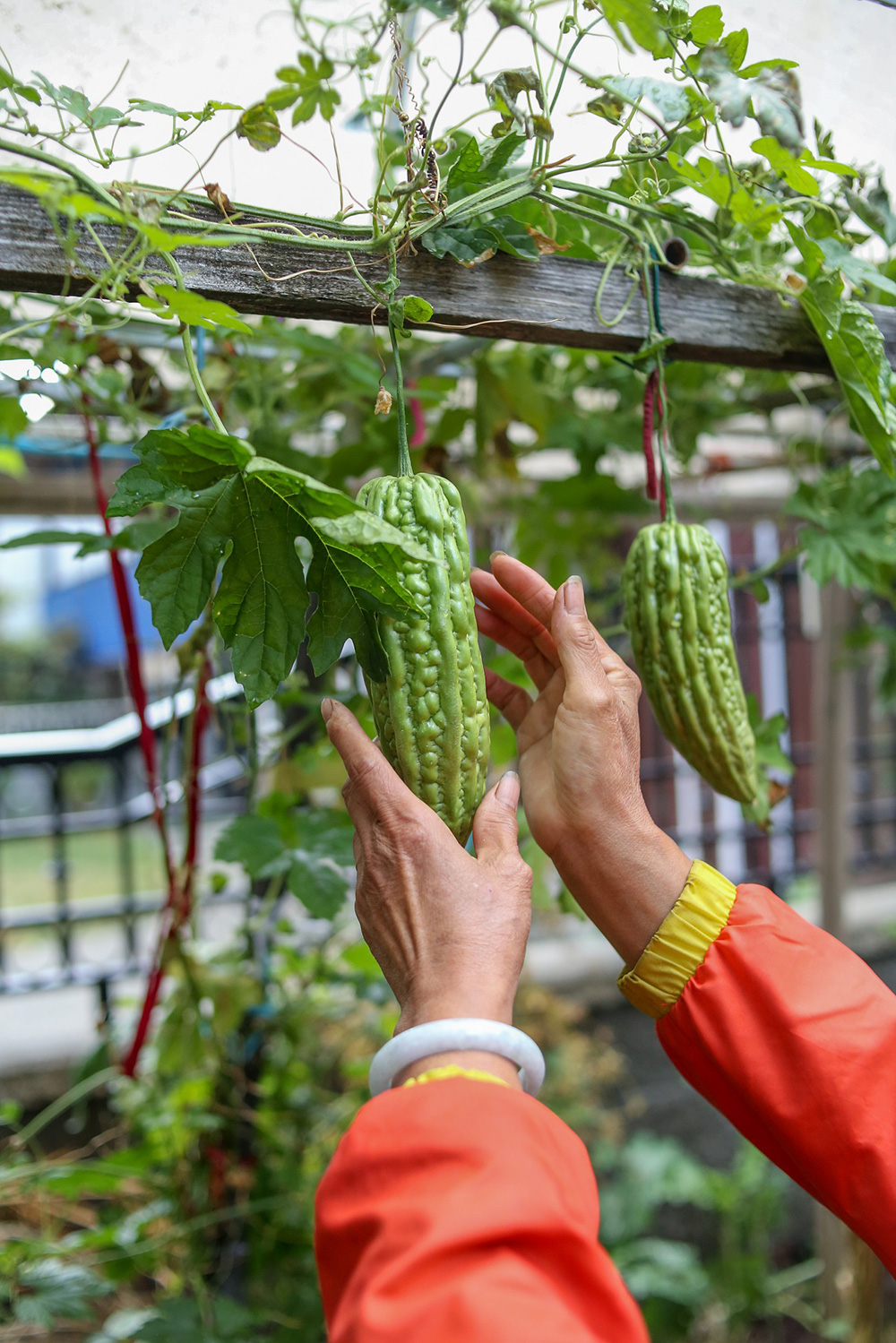
Ironically, Fung’s son isn’t as interested in organic produce these days — “he only eats the cucumbers and tomatoes!” — but her passion is ever growing.
“Once I planted jeet gua too early, and they all died,” she says. “It’s all trial and error. Some tips I pick up from friends, some from the radio.”
It’s impossible for growers like Fung with this much produce to be greedy. You simply can’t eat the entire harvest. You have to give it away. And so, these gardens are always shared.
Yeong, a soil science student, has noticed how such social connections benefit the plants themselves. Local friends give Fung their seeds, and she in turn plants them and saves the new seeds, which then develops generations of non-native crops that are increasingly acclimatizing to Vancouver — heritage to heirloom.
The bees are pleased, pollinating the flowers of Fung’s chayote squash on a recent Friday. To pick the ripe ones hanging just out of reach, Fung gets up on an iffy plastic chair. She doesn’t need help, she insists.
“I’m very capable, you know!”
You can read the stories from the Backyard Garden Project here, and the author’s 2017 story on immigrant gardeners, which may be the first in-depth article on the subject, here. ![]()




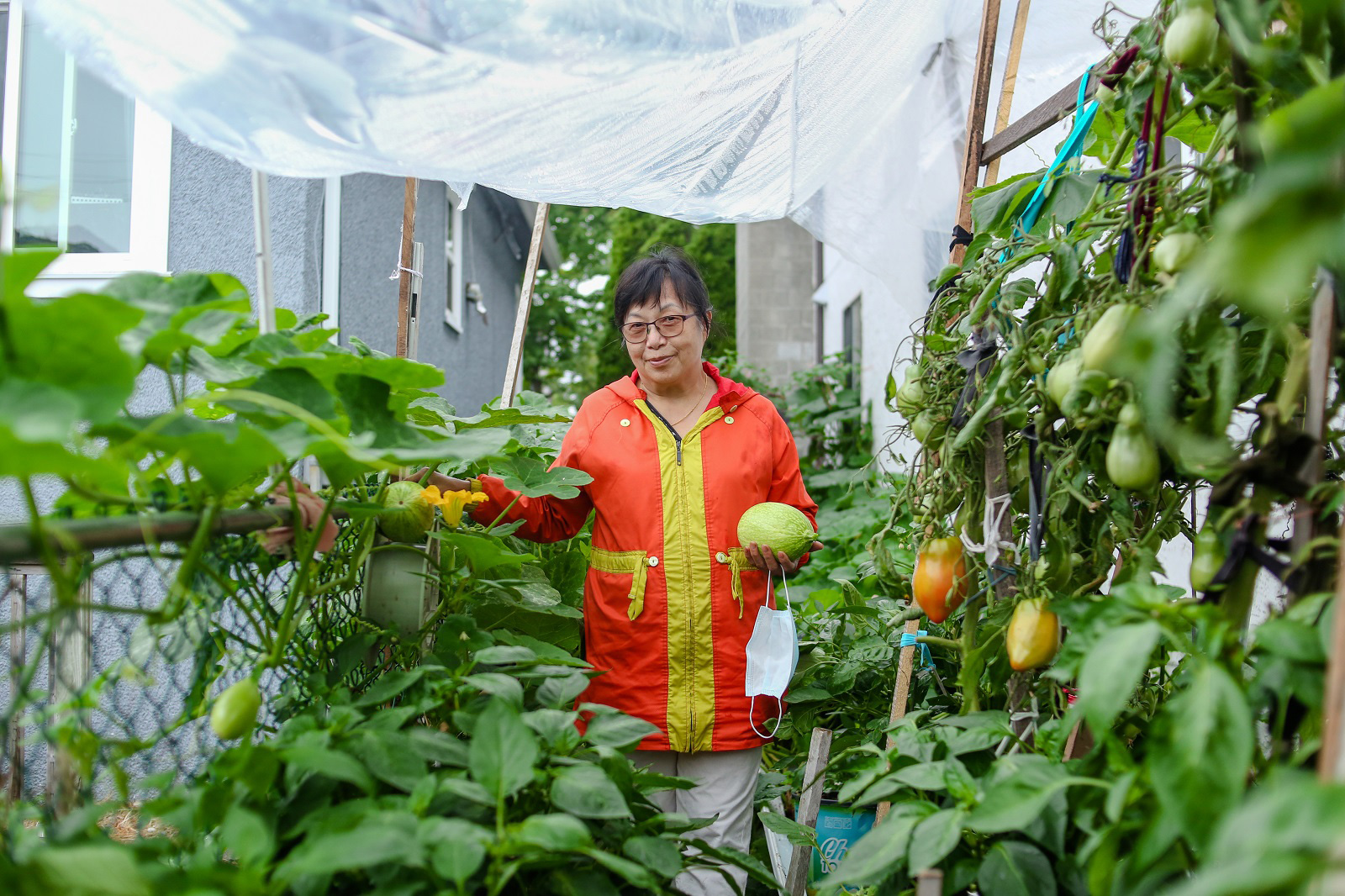












Tyee Commenting Guidelines
Comments that violate guidelines risk being deleted, and violations may result in a temporary or permanent user ban. Maintain the spirit of good conversation to stay in the discussion.
*Please note The Tyee is not a forum for spreading misinformation about COVID-19, denying its existence or minimizing its risk to public health.
Do:
Do not: